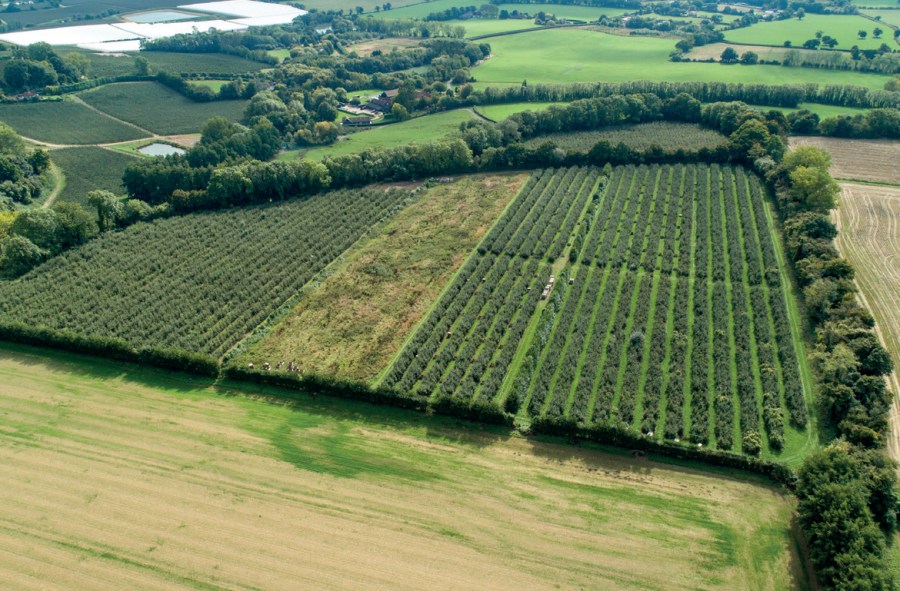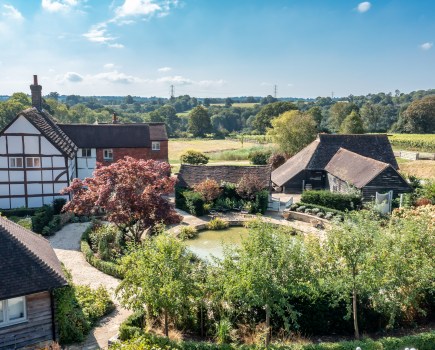Land and property specialist Strutt & Parker estimates that just under £480 million has been invested in vineyards and wineries over the past five years, as interest in English wine explodes.
To coincide with English Wine Week (17-25 June), Strutt & Parker has modelled the level of capital investment in the UK wine sector between 2018 and 2022, which was a period of rapid expansion.
The estimate is based on the amount of land bought for use as a vineyard, the cost of establishing vines and developing a vineyard, and the cost of setting up new wineries.
There are now over 900 vineyards in the UK, covering a total of about 10,000 acres and producing an estimated 12m bottles of wine in 2022.
Although the area of vines in the UK is still dwarfed by the historical wine-growing countries, the UK area is growing faster than in any of the top 25 wine-producing countries.
British wines also won a total of 143 medals at the recent Decanter World Wine Awards 2023, cementing the reputation of English wine on the World stage.
“Our analysis shows how astounding the surge in investment in the sector has been in recent years – coming remarkably close to £0.5 billion. Interest in the British wine sector is as strong as we can remember and over the past 12 months the number of calls we have received from people interested in either buying a vineyard or establishing a new one has tripled,” says Nick Watson, Head of Viticulture for Strutt & Parker.
“There have been some exciting examples of high-profile established brands such as Taittinger, Pommery and Freixenet investing in the UK over recent years. But the majority of investors in the sector tend to be people who have had a successful career in business and are looking for a change in direction. They view a vineyard as an investment which they hope will be financially sustainable, but also enjoyable.”
Mr Watson says the price of land suitable for vines typically ranges from £16,000 to £20,000/acre, while established vineyards can sell for more than £35,000/planted acre.
“It is an investment that requires deep pockets – the upfront costs of establishing a vineyard are significant and it takes five years before the vines reach full productivity, so cash flow needs careful planning.
“Yet despite the challenges, there seems to be no shortage of people seeking land on which to establish vines. The continued success of English sparkling wines on the international stage has put the sector on the map, sales are on the rise and there is a real sense of optimism about the future.”
Strutt & Parker was one of the first agents with access to specialist vineyard mapping software able to identify land suitable for growing vines. The best sites have free-draining soils, gentle south-facing slopes that are not susceptible to strong winds and late frosts, are less than 100m above sea level and where average temperature and sunshine hours are highest.
Very little land suitable for vines comes to the open market, so buyers usually need to approach landowners of suitable sites and negotiate with them to sell, often by offering a premium.
Arable land values in the south east – where growing vines is most established for climatic reasons – have risen over the past 12 months to about £10,000-12,000/acre, so the value of ground suitable for vines has also risen and now often sells for £16,000-£20,000/acre.
However, buyers are also increasingly looking to Norfolk, Suffolk and Essex, which share many of the same characteristics as East and West Sussex, Kent, Surrey and Hampshire, but where there is perhaps more untapped potential for planting vines.
Where buyers are only looking for a small plot of say 10-12 acres, which is the minimum size required for anyone looking to establish a vineyard as a viable business, then prices can rise as high as £25,000/acre. This is because the base value becomes an amenity value and there is more competition for smaller plots of land.
Climate change is projected to impact the UK wine sector by 2040, with growing season temperatures expected to rise, according to the CREWS-UK project.
This could present opportunities for more still red wine production and the growth of white wine varieties such as Sauvignon Blanc, Semillon, and Riesling.
Large new areas in the UK could also become more suitable for viticulture, including Cambridgeshire, Oxfordshire, Berkshire, the East Midlands, the Severn Valley, Southwest England and South Wales.




